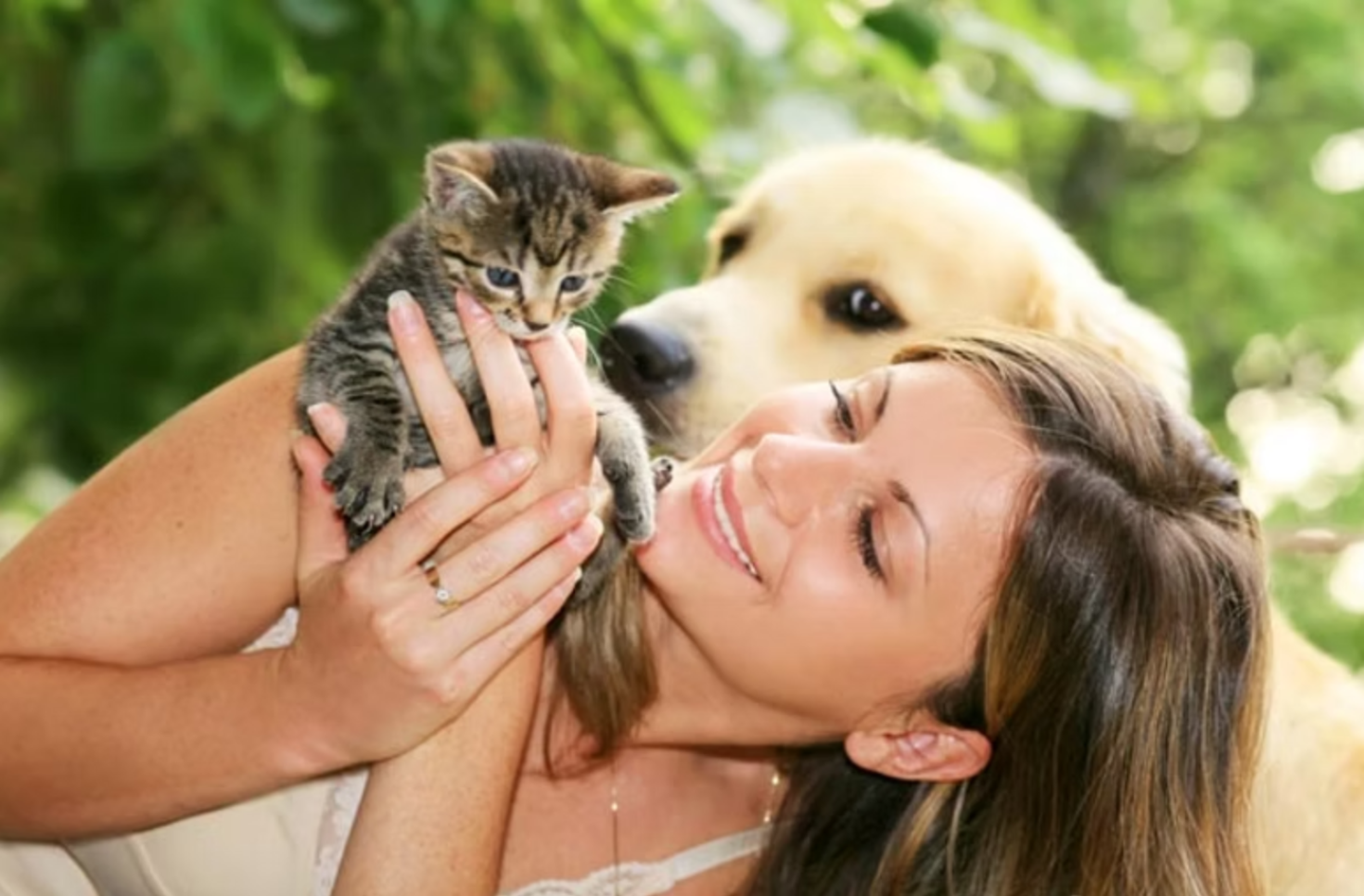Do pet owners love their dogs or cats more?
New research finds cultural differences shape how much people care about cats and dogs. Emotional bonds may not be universal.

A new study across three European countries reveals that cultural history—not just pet behavior—drives how people care for cats and dogs. (CREDIT: CC BY-SA 4.0)
In homes across Europe, pets often hold the status of beloved companions. But a long-standing question lingers: do people care more about their dogs than their cats?
A major study led by Dr. Peter Sandøe of the University of Copenhagen aimed to answer this by surveying thousands of pet owners in three European countries. His findings reveal a complex story shaped not only by animal behavior but also by cultural heritage and practical concerns.
Measuring How Much People Care
To understand how much people care for their pets, the research team didn’t just look at emotion. They measured behavior. The study asked questions that touched on emotional attachment, health care decisions, and expectations of veterinary treatment.
A key tool was the Lexington Attachment to Pets Scale (LAPS), which uses statements like “My pet is my best friend” to assess emotional bonds. The researchers also considered whether the pet had health insurance, how much the owner was willing to pay for life-saving care, and what kind of veterinary care they expected to be available.
Surveys were sent to over 2,100 people across Denmark, Austria, and the United Kingdom. These were not just casual polls. The researchers made sure the group represented the population in terms of age, gender, and education. Responses came from 844 dog owners, 872 cat owners, and 401 people who owned both.
Dog owners, on average, scored higher on the LAPS in all three countries. They were also more likely to pay for pet insurance, cover expensive treatments, and expect more advanced vet services. But these trends didn’t look the same everywhere. In Denmark, the gap between how people treated dogs and cats was very wide. In Austria, it was smaller. In the UK, the difference was narrow.
Related Stories
Cultural Roots in Pet Care
This difference across countries offers insight into a key debate. Some researchers argue that people care more about dogs because of how dogs behave—loving, social, and eager to please. Cats, by contrast, are often seen as independent and less emotionally involved. If that were the main reason, you’d expect the same care patterns across every country. But the data didn’t support that.
Instead, the findings suggest a stronger role for culture. Countries that urbanized earlier—like the UK—may have developed closer relationships with cats. In rural areas, cats often lived outside and took care of pests. Dogs, by contrast, worked closely with people. This long history of cooperation may have deepened human attachment to dogs. In Denmark, which urbanized later, that old view of cats may still be stronger.
Dr. Sandøe noted, “The degree of difference varied dramatically between countries,” suggesting that history and tradition still play a role. In the UK, where cats are more likely to be considered part of the family, owners showed only a slight preference for dogs. In Denmark, dogs were clearly favored across every measure.
Is It Just About the Money?
Some might think that spending more on vet care or having pet insurance means the owner loves the animal more. But the picture is more complex. Dogs tend to be more expensive to care for. Their food costs more. They often need higher doses of medicine. Some surgeries are more difficult or costly for larger breeds. These practical concerns can make insurance more appealing for dog owners, without saying much about their feelings.
Health insurance doesn’t always show who cares more. It might just reflect a smart financial choice. In countries where pet insurance is common, the differences may have more to do with cost-benefit thinking than emotion. For example, if treating a large dog is far more expensive than treating a cat, it makes more sense to insure the dog.
Emotional Ties and Behavior
Emotional closeness is another tricky thing to measure. Statements like “My pet knows when I’m feeling bad” or “My pet is my best friend” may not mean the same thing to every person. Some people might care deeply about a pet but hesitate to speak about them that way. Others might describe their pets in loving terms without always backing it up with actions. There’s also the issue of anthropomorphism—giving animals human traits—that can blur how people express their affection.
Still, behavior matters. Studies show dog owners often spend more time with their pets. They’re more likely to buy gifts for their dogs, take them to the vet, and train them regularly. Dogs are more often treated as children, missed when the owner is away, and vaccinated on schedule.
Research even shows that owners are more likely to give a dog pills twice a day for a month or spend several weeks training them. Cat owners are less likely to do these things.
One possible explanation is that dogs ask for more attention. They wag their tails, follow people around, and need walks. Cats are more self-reliant. Their behavior might not encourage the same kind of care. Owners might feel less connected if the pet doesn’t seem emotionally close in return.
Potter and Mills found that cats do not form strong attachments to their owners in the way dogs do. Other studies suggest that the more control an owner feels they have over a pet, the more emotionally attached they become. Dogs, who are easier to train and manage, fit this idea better than cats. The study led by Kirk supports this, showing that people feel a deeper bond when they feel in control.
Behavior or Culture?
Some researchers believe this difference in care stems from the animals themselves—the “dog vs. cat behavior” idea. But the study by Sandøe and his team also supports the “culture hypothesis.” This view suggests that people’s treatment of pets reflects traditions, living environments, and the history of how animals were used.
If cat behavior alone drove people to care less about them, the gap in emotional connection and treatment would be similar in every country. But the researchers found that this is not the case. In the UK, people cared about their cats almost as much as their dogs. In Denmark, the difference was wide. Austria was in the middle. These results challenge the idea that cat behavior alone is to blame. Instead, they point to cultural differences that shape how people value their pets.
Future Implications for Veterinary Care
The findings have real-world effects. If cat owners, on average, expect fewer treatment options, they may not push for the same level of care. That could discourage investment in advanced feline veterinary services. But as cultural views change, this gap could close. More cat owners might start to view their pets as family members deserving of the same care as dogs.
Veterinary professionals may also use this data to improve how they serve pet owners. Understanding why owners choose one animal over another and how they feel about them can guide better communication and care strategies. Knowing that cultural habits influence attachment can help vets engage cat owners more effectively and encourage more preventive care.
Professor Clare Palmer of Texas A&M, who co-authored the study, stresses the need for caution in applying the results too broadly. The study focused only on Europe. In other regions, such as Asia or Latin America, people may treat pets very differently. Some places may show stronger emotional bonds with cats, reversing the trends seen in Europe.
The study also has limitations. People who agree to take surveys about pets may already be more interested in animals. Some questions, like whether a pet is seen as a friend, depend on personal beliefs and may not reflect actual care. The researchers recognize that practical, social, and emotional factors all shape these answers.
Final Thoughts
In the end, this study gives a clearer picture of how cultural traditions and animal behavior work together to influence how much people care about their pets. While dogs often receive more attention and care, this is not true everywhere. The narrow gap in the UK shows that attitudes toward cats can evolve.
Understanding these patterns helps not only researchers but also veterinarians and animal advocates looking to improve pet welfare.
Caring for a pet is more than just buying insurance or paying vet bills. It’s shaped by feelings, habits, culture, and history. As society changes, the gap in how people care for cats and dogs might continue to shrink, bringing new balance to the world of pet companionship.
Note: The article above provided above by The Brighter Side of News.
Like these kind of feel good stories? Get The Brighter Side of News' newsletter.



